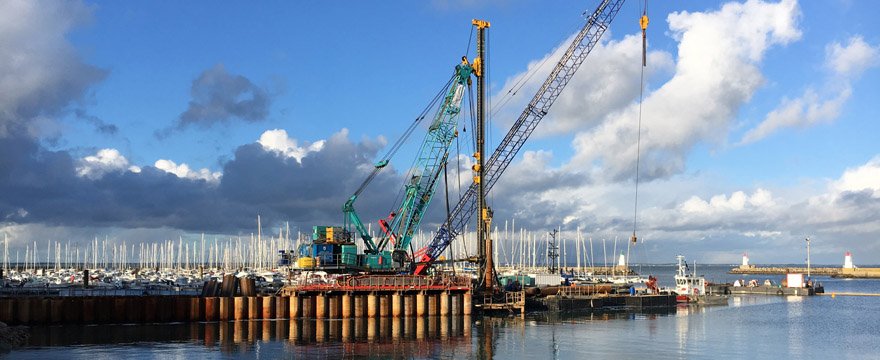Marina gets overhaul in Britanny
In the late 18th century, France’s revolutionary government was in its prime. Napoleon’s star was rising and his armies swept through Europe. Napoleon himself knew that “armies march on their stomachs”. The government offered a 12,000-franc prize for the invention of a method of preserving food during long military campaigns. This would later have far-reaching impacts on the small Brittany village of Quiberon.
After years of experimentation, Parisian confectioner Nicolas Appert discovered that the combination of heat and air-tight packaging prevents food from getting spoiled. And so canning was invented – and Appert pocketed a nice sum of 12,000 francs.
Not long after, it was discovered in Brittany that tin cans were also a convenient way of preserving sardines. In the 19th century, Quiberon became the leading harbour for sardine fishing and the production of canned sardines in France.
Quiberon’s canned sardines can still be bought today, even online, but sardine fishing as a livelihood gave way to tourism a long time ago. Nowadays, the charming Port Haliguen is an important marina for recreational boaters, with more than 1,100 moorings and 11,000 overnight stays a year. Next to the marina lies a long stretch of beautiful sandy beach.
Originally built for fishing boats, the port was being stretched to its limit in terms of growth. The port’s infrastructure and installations are past their prime, and natural silting has made the harbour basins too low for larger boats.
A massive renovation project is currently under way in Port Haliguen: Its two harbour basins are being dredged deeper, the quays and pontoons are being completely redesigned, and additional moorings will be installed. In the first phase, the goal is to remove more than 50,000 cubic metres of clay from the basins. The clay will be used as filler in a new parking area that is to be built.
The contractors on the project are VINCI Construction Maritime et Fluvial and Eiffage TMF. The harbour foundations are constructed as a combi-wall structure, where steel piles are drilled into the seabed as load-bearing structures and steel sheets are installed in between them to form a wall. Robit was in charge of the technical solutions for the combi wall, under the leadership of Senior Specialist Kari Juntunen and Distributor Business Manager Taha Laissaoui. “Together with VINCI, we came up with the best overall solution, including equipment and operating methods. And it proved to be a winner: the piling was a great success,” recounts Taha.
A total of 460 piles with an average length of 15–18 metres were drilled. Some of the piles were delivered by the Finnish company SSAB. Robit’s delivery included casing systems (DTH-ROX SR 863/23), a robust 24-inch hammer and shock absorbers.
The port modernisation project is massive, and for the time being, the screeching of the seagulls is drowned out by the rumbling of excavators and drills. Port Haliguen should be ready to welcome travellers in all its renewed splendour in 2020.


